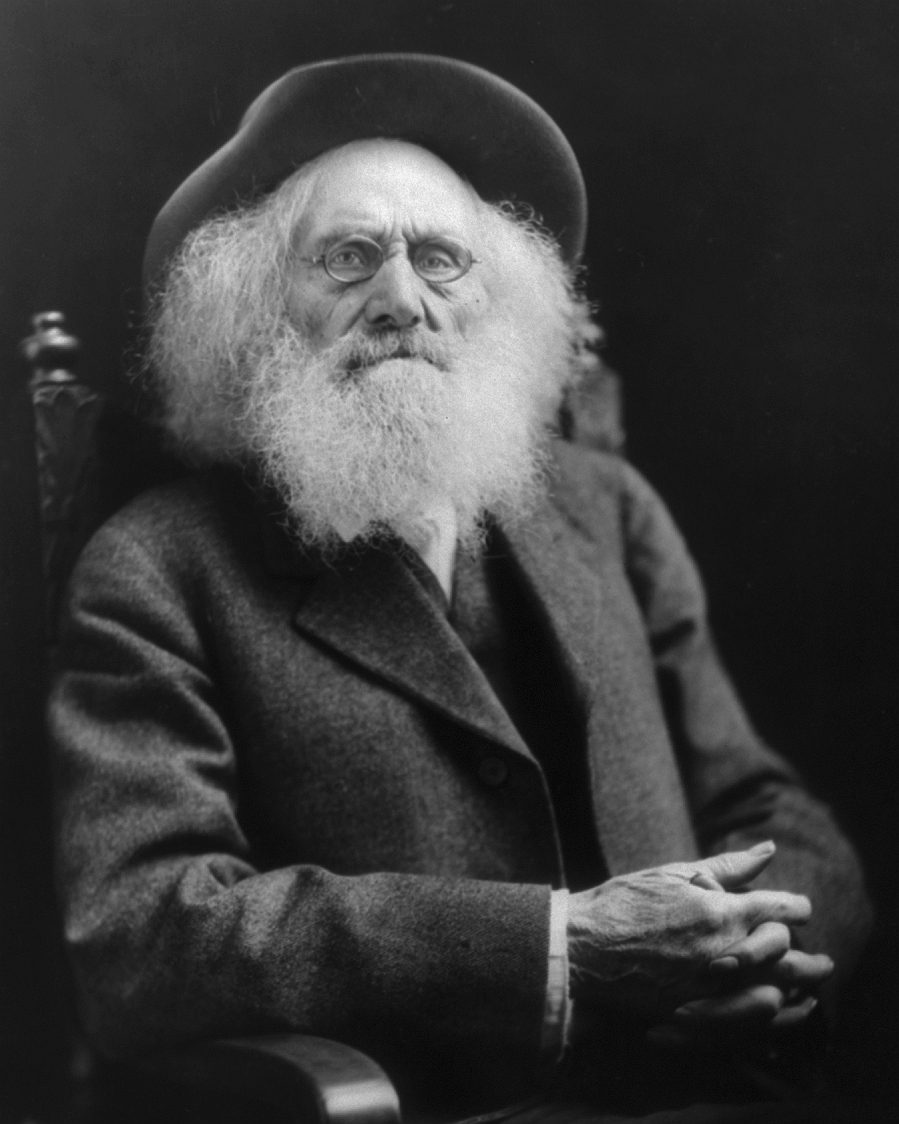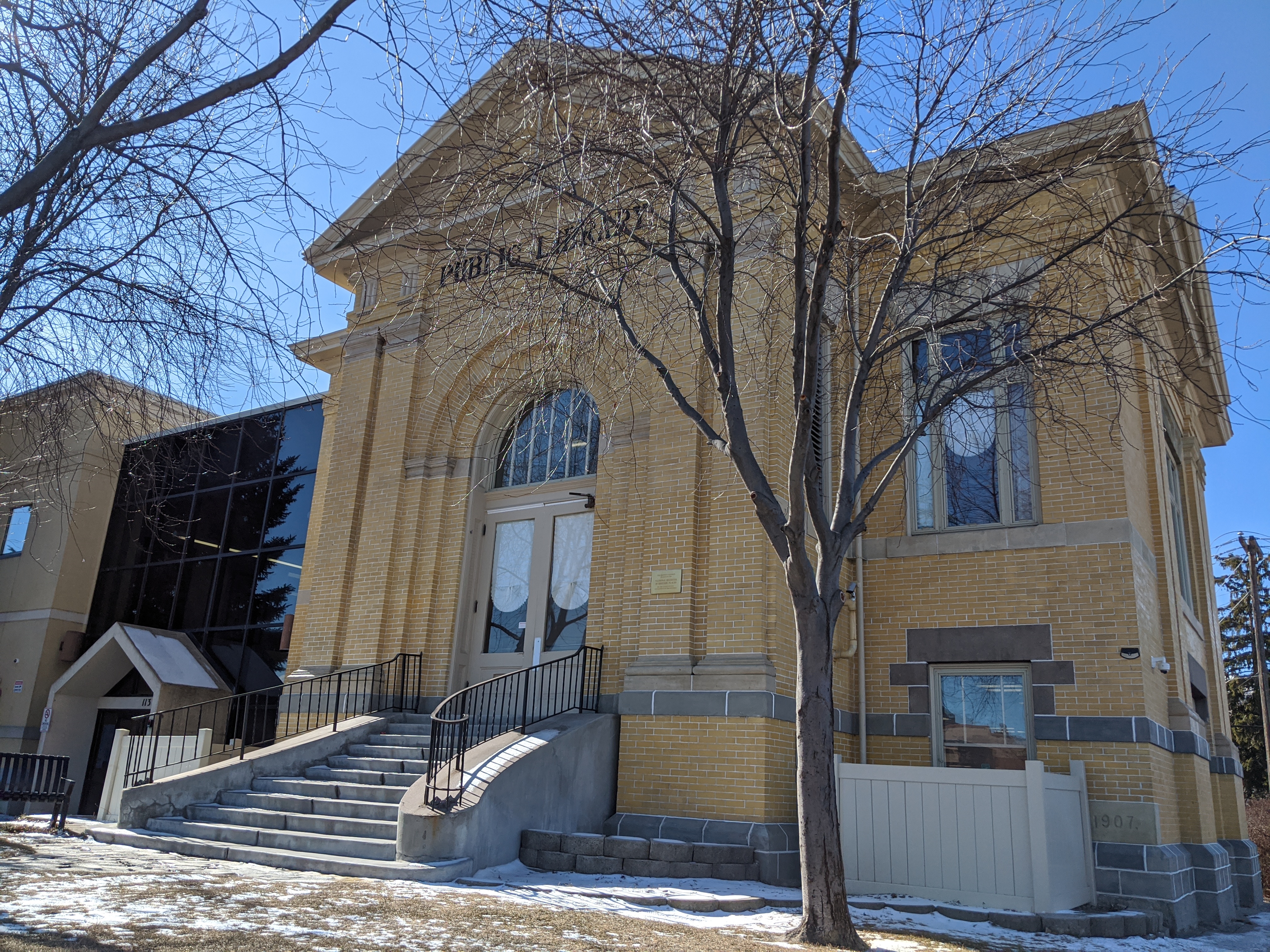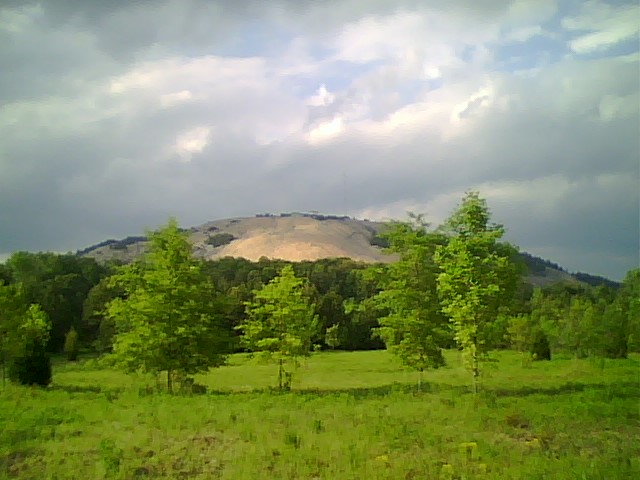|
Oregon Trail Memorial Half Dollar
The Oregon Trail Memorial half dollar was a fifty-cent piece struck intermittently by the United States Bureau of the Mint between 1926 and 1939. The coin was designed by Laura Gardin Fraser and James Earle Fraser, and commemorates those who traveled the Oregon Trail and settled the Pacific Coast of the United States in the mid-19th century. Struck over a lengthy period in small numbers per year, the many varieties produced came to be considered a ripoff by coin collectors, and led to the end, for the time, of the commemorative coin series. Ohio-born Ezra Meeker had traveled the Trail with his family in 1852 and spent the final two decades of his long life before his death in 1928 publicizing the Oregon Trail, that it should not be forgotten. In 1926, at age 95, he appeared before a Senate committee, requesting that the government issue a commemorative coin that could be sold to raise money for markers to show where the Trail had been. The coin had originally been thought ... [...More Info...] [...Related Items...] OR: [Wikipedia] [Google] [Baidu] |
United States Dollar
The United States dollar (Currency symbol, symbol: Dollar sign, $; ISO 4217, currency code: USD) is the official currency of the United States and International use of the U.S. dollar, several other countries. The Coinage Act of 1792 introduced the U.S. dollar at par with the Spanish dollar, Spanish silver dollar, divided it into 100 cent (currency), cents, and authorized the Mint (facility), minting of coins denominated in dollars and cents. U.S. banknotes are issued in the form of Federal Reserve Notes, popularly called greenbacks due to their predominantly green color. The U.S. dollar was originally defined under a bimetallism, bimetallic standard of (0.7734375 troy ounces) fine silver or, from Coinage Act of 1834, 1834, fine gold, or $20.67 per troy ounce. The Gold Standard Act of 1900 linked the dollar solely to gold. From 1934, its equivalence to gold was revised to $35 per troy ounce. In 1971 all links to gold were repealed. The U.S. dollar became an important intern ... [...More Info...] [...Related Items...] OR: [Wikipedia] [Google] [Baidu] |
Oregon Trail Memorial Association
The Oregon-California Trails Association is an interdisciplinary organization based at Independence, Missouri, United States. OCTA is dedicated to the preservation and protection of overland emigrant trails and the emigrant experience. OCTA Chapters work closely with National Trails System partners to help interpret and sustain the quality of outdoor recreation experiences along these trail corridors. For example, OCTA's guide to ''Mapping Emigrant Trails'' (MET Manual became the National Park Service's benchmark protocol for GPS-assisted topographical mapping along other historic and scenic trails. Three major historical trails crossed America's western territories as wagon train routes to Santa Fe, Oregon, and California. The Santa Fe Trail began in 1821 as a foreign trade route to New Mexico. It was unique in American History due to its overland commerce routes rather than seafaring transportation. The Oregon Trail became more heavily traveled in 1843 by settlers wanting to es ... [...More Info...] [...Related Items...] OR: [Wikipedia] [Google] [Baidu] |
Victory Highway
The Victory Highway was an auto trail across the United States between New York City and San Francisco, roughly equivalent to the present U.S. Route 40. It was created by the Victory Highway Association, which was organized in 1921 to locate and mark a transcontinental highway to be dedicated to American forces who died in World War I. A series of Victory Eagle sculptures were planned to mark the route, although only a few were actually built and placed. By 1922 the organization had decided to run the highway from New York City southwest to Camden, New Jersey; Philadelphia; Wilmington, Delaware; Baltimore; and Washington, D.C. before turning west to San Francisco. Washington was later removed from the route, and the highway was relocated to run west from Baltimore to Cumberland, Maryland. At Cumberland, it picked up the old National Road to Vandalia, Illinois, which was already marked as part of the National Old Trails Road. It continued to follow that auto trail near Fulton, Mis ... [...More Info...] [...Related Items...] OR: [Wikipedia] [Google] [Baidu] |
Lincoln Highway
The Lincoln Highway is one of the first transcontinental highways in the United States and one of the first highways designed expressly for automobiles. Conceived in 1912 by Indiana entrepreneur Carl G. Fisher, and formally dedicated October 31, 1913, the Lincoln Highway runs coast-to-coast from Times Square in New York City west to Lincoln Park in San Francisco. The full route originally ran through 13 states: New York, New Jersey, Pennsylvania, Ohio, Indiana, Illinois, Iowa, Nebraska, Colorado, Wyoming, Utah, Nevada, and California. In 1915, the "Colorado Loop" was removed, and in 1928, a realignment routed the Lincoln Highway through the northern tip of West Virginia. Thus, there are 14 states, 128 counties, and more than 700 cities, towns, and villages through which the highway passed at some time in its history. The first officially recorded length of the entire Lincoln Highway in 1913 was . Over the years, the road was improved and numerous realignments were made, ... [...More Info...] [...Related Items...] OR: [Wikipedia] [Google] [Baidu] |
Minnie Howard
Minnie Frances Howard (August 23, 1872 – September 2, 1965) was "Pocatello's pioneer woman physician" and a dedicated historian. She was also active in building the town of Pocatello, Idaho, through her work with various civic and religious organizations. Early life Minnie Frances Hayden Howard was born August 23, 1872, in Memphis, Missouri, to Jacob and Carina Jane Wood Hayden. She studied first to become a teacher. After her marriage to a young medical student, William Forrest Howard, on August 23, 1894, in Larned, Kansas, she attended and graduated from Kansas University Women's Medical School. She accompanied her husband while he studied surgical procedures in Vienna, Austria. Life in Pocatello Howard moved to Pocatello with her husband in 1902. They established medical practices and became active, respected members of the community. They had four sons, all of whom went on to become doctors themselves. Howard was an early president of the Southeast Idaho Historical Socie ... [...More Info...] [...Related Items...] OR: [Wikipedia] [Google] [Baidu] |
Pocatello, Idaho
Pocatello () is the county seat of and the largest city in Bannock County, Idaho, Bannock County, with a small portion on the Fort Hall Indian Reservation in neighboring Power County, Idaho, Power County, containing the city's airport. It is the principal city of the Pocatello, Idaho metropolitan area, Pocatello metropolitan area, which encompasses all of Bannock County, Idaho, Bannock County in the southeastern part of the U.S. state of Idaho. As of the 2020 United States census, 2020 census, the population of Pocatello was 56,320. Pocatello is the List of cities in Idaho, 6th most populous city in the state, just behind Caldwell, Idaho, Caldwell. The city is at an elevation of AMSL, above sea level and it sits on the Portneuf River (Idaho), Portneuf River in the Snake River Plain (ecoregion), Snake River Plain ecoregion. Pocatello covers a land area of . Pocatello is the home of Idaho State University and the manufacturing facilities of Amy's Kitchen and ON Semiconductor, ... [...More Info...] [...Related Items...] OR: [Wikipedia] [Google] [Baidu] |
Idaho State Journal
The ''Idaho State Journal'' is daily newspaper published in Pocatello, Idaho, United States, that serves southeast Idaho, including Bannock, Bear Lake, Bingham, Caribou, Franklin, Power, and Oneida counties. The paper is published by Travis Quast, with Ian Fennell as managing editor. History The periodical began it existence as a political publication in 1890, as the ''Pocatello Tribune''. On January 6, 1893, it became a newspaper with a weekly printing. Over the ensuing years it increased publication to twice weekly, and then thrice weekly. In March 1897 a failed attempt was made to print daily editions. However, that endeavor became successful several years later and the newspaper has published daily since March 17, 1902. On April 28, 1924, the ''Idaho State Journal'' began publication, but the ''Pocatello Tribune'' purchased that periodical in 1932. Thereafter, the ''Idaho State Journal'' continued as the morning edition of the ''Pocatello Tribune''. However, due to the ... [...More Info...] [...Related Items...] OR: [Wikipedia] [Google] [Baidu] |
Stone Mountain Memorial Half Dollar
The Stone Mountain Memorial half dollar was an American fifty-cent piece struck in 1925 at the Philadelphia Mint. Its main purpose was to raise money on behalf of the Stone Mountain Confederate Monumental Association for the Stone Mountain Memorial near Atlanta, Georgia. Designed by sculptor Gutzon Borglum, the coin features a depiction of Confederate generals Robert E. Lee and Stonewall Jackson on the obverse and the caption: "Memorial to the Valor of the Soldier of the South" on the reverse. The piece was also originally intended to be in memory of the recently deceased president, Warren G. Harding, but no mention of him appears on the coin. In the early 20th century, proposals were made to carve a large sculpture in memory of General Lee on Stone Mountain, a huge rock outcropping. The owners of Stone Mountain agreed to transfer title on condition the work was completed within 12 years. Borglum, who was, like others involved, a Ku Klux Klan member, was engaged to design ... [...More Info...] [...Related Items...] OR: [Wikipedia] [Google] [Baidu] |
Tournament Of Roses Parade
A tournament is a competition involving at least three competitors, all participating in a sport or game. More specifically, the term may be used in either of two overlapping senses: # One or more competitions held at a single venue and concentrated into a relatively short time interval. # A competition involving a number of matches, each involving a subset of the competitors, with the overall tournament winner determined based on the combined results of these individual matches. These are common in those sports and games where each match must involve a small number of competitors: often precisely two, as in most team sports, racket sports and combat sports, many card games and board games, and many forms of competitive debating. Such tournaments allow large numbers to compete against each other in spite of the restriction on numbers in a single match. These two senses are distinct. All golf tournaments meet the first definition, but while match play tournaments meet the secon ... [...More Info...] [...Related Items...] OR: [Wikipedia] [Google] [Baidu] |
Brooklyn Bridge
The Brooklyn Bridge is a cable-stayed suspension bridge in New York City, spanning the East River between the boroughs of Manhattan and Brooklyn. Opened on May 24, 1883, the Brooklyn Bridge was the first fixed crossing of the East River. It was also the List of longest suspension bridge spans#History of longest suspension spans, longest suspension bridge in the world when opened, with a main span of and a deck above Mean High Water. The span was originally called the New York and Brooklyn Bridge or the East River Bridge but was officially renamed the Brooklyn Bridge in 1915. Proposals for a bridge connecting Manhattan and Brooklyn were first made in the early 19th century; these plans evolved into what is now the Brooklyn Bridge, designed by John A. Roebling. The project's chief engineer, his son Washington Roebling, contributed further design work, assisted by the latter's wife, Emily Warren Roebling. Construction started in 1870 and was overseen by the New York Bridge Comp ... [...More Info...] [...Related Items...] OR: [Wikipedia] [Google] [Baidu] |
Theodore Roosevelt
Theodore Roosevelt Jr. (October 27, 1858 – January 6, 1919), also known as Teddy or T.R., was the 26th president of the United States, serving from 1901 to 1909. Roosevelt previously was involved in New York (state), New York politics, including serving as the state's List of governors of New York, 33rd governor for two years. He served as the 25th Vice President of the United States, vice president under President William McKinley for six months in 1901, assuming the presidency after Assassination of William McKinley, McKinley's assassination. As president, Roosevelt emerged as a leader of the History of the Republican Party (United States), Republican Party and became a driving force for United States antitrust law, anti-trust and Progressive Era policies. A sickly child with debilitating asthma, Roosevelt overcame health problems through The Strenuous Life, a strenuous lifestyle. He was homeschooled and began a lifelong naturalist avocation before attending Harvard Colleg ... [...More Info...] [...Related Items...] OR: [Wikipedia] [Google] [Baidu] |
Oregon Territory
The Territory of Oregon was an organized incorporated territory of the United States that existed from August 14, 1848, until February 14, 1859, when the southwestern portion of the territory was admitted to the United States, Union as the Oregon, State of Oregon. Originally claimed by several countries (see Oregon Country), Spanish "El Orejón" was part of the Territorio de Nutca (1789–1795), later in the 19th century, the region was divided between the British North America, British Empire and the US in 1846. When established, the territory encompassed an area that included the current states of Oregon, Washington (state), Washington, and Idaho, as well as parts of Wyoming and Montana. The capital of the territory was first Oregon City, Oregon, Oregon City, then Salem, Oregon, Salem, followed briefly by Corvallis, Oregon, Corvallis, then back to Salem, which became the state capital upon Oregon's admission to the Union. Background Originally inhabited by Native Americans, ... [...More Info...] [...Related Items...] OR: [Wikipedia] [Google] [Baidu] |







